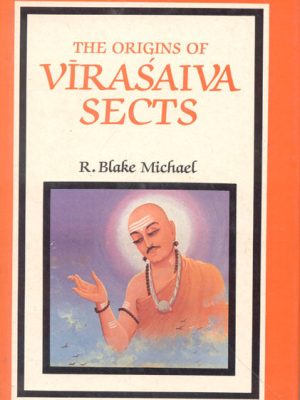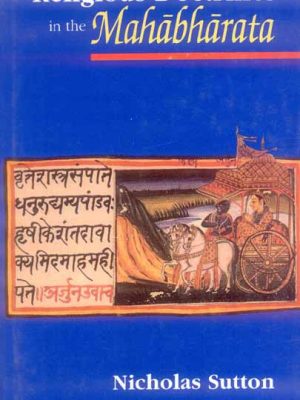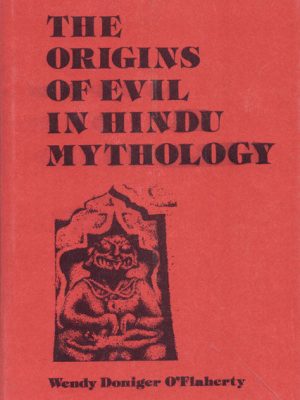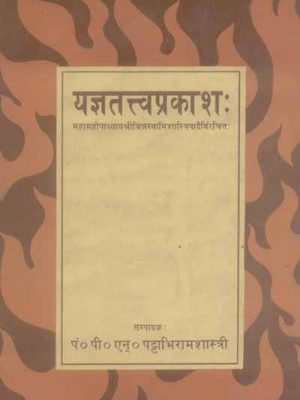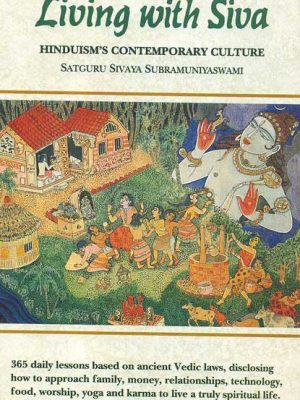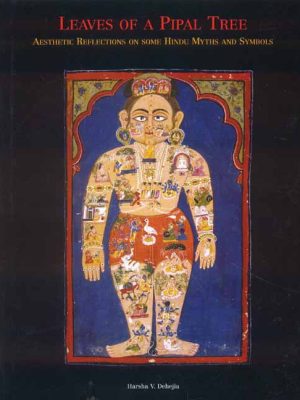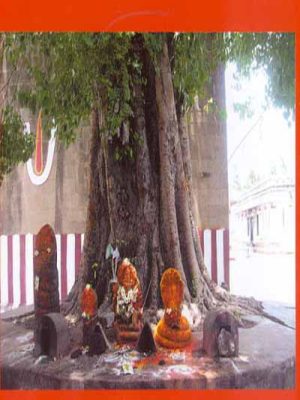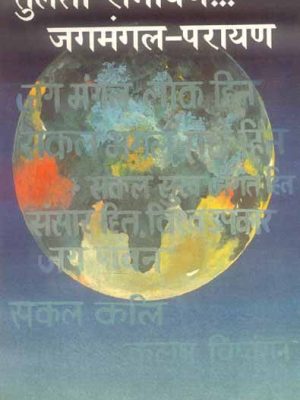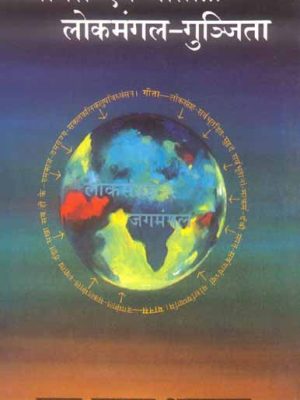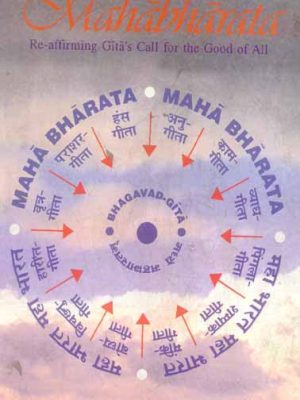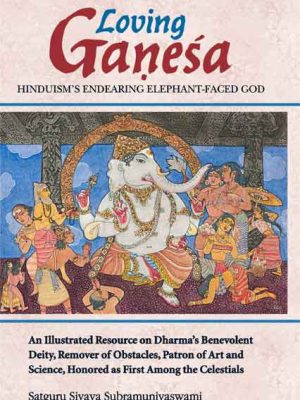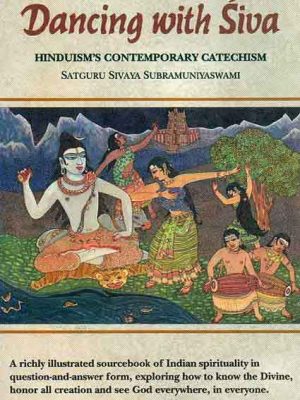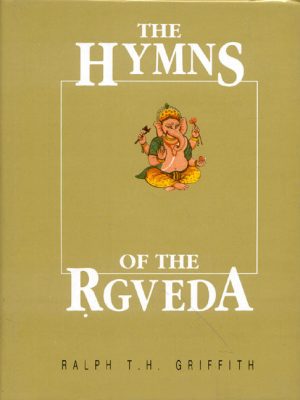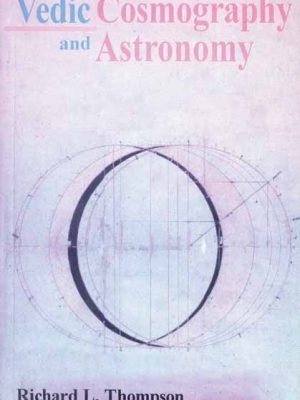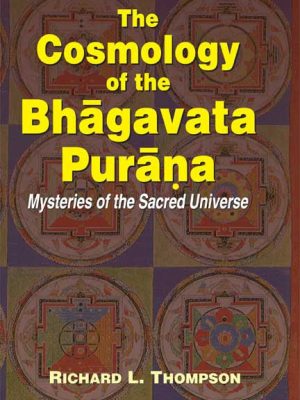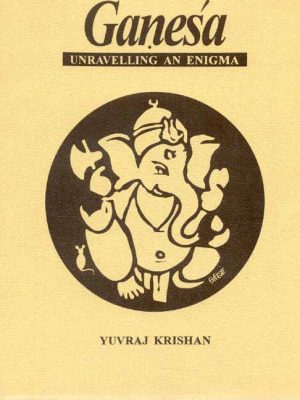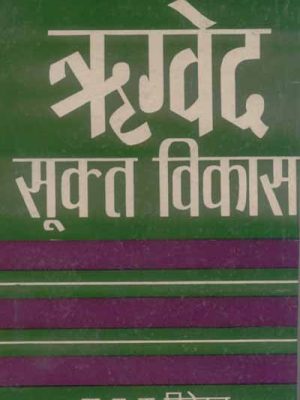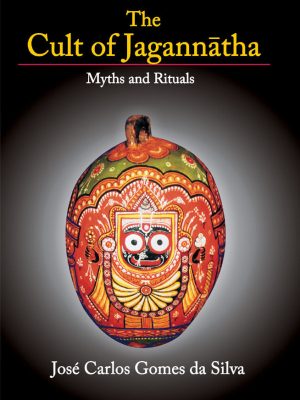Motilal Banarsidass
-
The Origins of Virasaiva Sects: A TypologicaL Analysis of Ritual and Associational Patterns
The Origins of Virasaiva Sects: A TypologicaL Analysis of Ritual and Associational Patterns
An investigation of Virasavism is provided in the book Origins of the Virasaiva Sects. Already, the actions of founder and reformer Basava are well recognised throughout the whole of India and the rest of the globe. The Sunyasampadane, an important document from the evolution of Virasaivism in the third century, is investigated here. The subject of Virasaivism is investigated in great depth here. Already, the efforts of Virasaivism’s founder and reformer Basava are widely known across all of India, and some parts of Virasaivism’s reformation have garnered the attention of western research. The author delves into a crucial document known as the Sunyasampadane, which dates back to the formation of Virasaivism in the third century.
Author
R. Blake Michael
₹350.00 -
Religious Doctrines in the Mahabharata
Religious Doctrines in the Mahabharata
This is the longest epic poem ever written, and it is widely considered to be one of the best epic poems ever written in any language. With the intention of serving as a treatise on life in general, it covers topics such as religion and ethics, politics and government philosophy, and the search for redemption.
Reprint of a foundational text on the Mahabharata that examines the book’s most important ideas and topics. a new perspective on the ancient Hindu and Indian epicReview(s)
“…it explores a certain discourse rather than expounding a single dogmas” … extremely useful to have materials from the whole epic so carefully assembled and compared.” – Journal of Royal Asiatic Society
“This is an eminently readable book.
Author
Nicholas Sutton
₹995.00 -
The Origins of Evil in Hindu Mythology
The Origins of Evil in Hindu Mythology
James Austin’s insights into the fundamental connections that exist between Zen Buddhism and brain science are continued in this volume, which is a follow-up to his extremely popular book Zen and the Brain. In Zen-Brain Reflections, Austin, a clinical neurologist, researcher, and Zen practitioner, investigates the growing psychological processes and brain alterations connected with the path of long-range contemplative training. Austin is also a researcher at the University of California, San Francisco. Not only does Austin draw from the most recent findings in neuroscience and new neuroimaging investigations, but he also pulls from Zen literature and his own experience with different states of consciousness. This book picks up exactly where the last one left off. Zen-Brain Reflections. It provides answers to issues such as “how exactly do placebos and acupuncture impact the brain?” Can scientists using neuroimaging pinpoint the locations in our brains where our concepts of self first take shape? How can the most cutting-edge brain imaging techniques be used to better effectively monitor meditators? How is it that extensive amounts of time spent meditating, along with fleeting experiences of enlightenment, may bring about fundamental changes in the physiological makeup of the brain? In a number of the chapters, there are theories that may be tested that indicate methods to associate normal brain processes and the practise of meditation with the occurrence of unusual states of consciousness. After making a quick introduction to the subject of Zen and discussing the most current findings from research into meditation, Austin discusses the most recent findings from research on the amygdala, frontotemporal connections, and paralimbic extensions of the limbic system. After that, he investigates the many states of consciousness, from the earliest, most shallow absorptions to the latter, most significant “peak experiences.” This discussion starts with the states known as kensho and satori and includes an updated study of the many ways in which these states convey “oneness.” He refers beyond the even more advanced phases toward that uncommon continuing degree of enlightenment that is characterised by the manifestation of “sage wisdom.” Last but not least, in
Author
W.D. O’Flaherty
₹850.00 -
Yagyatattvaprakash-Chinnswami Shastri Virchit
Yagyatattvaprakash-Chinnswami Shastri Virchit
Yagyatattvaprakash-Chinnswami Shastri Virchit
Author
P. N. Pattabhiram Shastri
₹645.00 -
Living with Siva: Hinduism’s Contemporary Culture
Living with Siva: Hinduism’s Contemporary Culture
365 daily teachings that are founded on ancient Vedic rules and disclose how to handle family, money, relationships, technology, food, worship, yoga, and karma in order to live a really spiritual existence.
The Complete Master Course Series
This book contains some information that has never been published before and all of it is vital to your own awakening on the road to uniting with God. You will discover these profound truths and insights of Indian spirituality inside its pages. Dancing with Siva is the first book of a unique trilogy that is collectively referred to as The Master Course. It represents the culmination of fifty years of yogic realisations and the sharing of the Hindu mystical teachings with aspirants. The trilogy is a comprehensive overview of astanga yoga, which is also known as raja yoga. Astanga yoga is comprised of eight distinct stages, each of which is reliant upon the step that came before it. These eight processes are known as yama (restraint), niyama (observance), asana (posture), pranayama (breath control), pratyahara (sense withdrawal), dharana (concentration), dhyana (meditation), and samadhi (intense concentration) (contemplation).
The trilogy elucidates, in clear and concise words, why one must start at the beginning, with a solid foundation consisting of philosophical coherence and moral excellence, and then progress from there. The book “Dancing with Siva” explains the philosophical and Vedic-Agamic ideas, attitudes, and expectations that are central to the Saivite school of Hinduism.
The second book in the trilogy is titled Living with Siva, and it delves into the Saivite way of life, as well as its culture, family dynamics, character development, and the overpowering of negative routines. If emphasises yama and niyama, in addition to pranayama and asana, although to a lesser extent (hatha yoga).
Merging with Siva is the third book in the trilogy, and it covers steps five, six, and seven. These steps lead to step eight, which is the deeper realisations, samadhis, yogic experiences, and mystical encounters, such as the inner light and nada-nadi sakti, all of which we begin to experience once we learn how to dance with Siva and how to live with Siva. Merging with Siva can be purchased here. The yogic and metaphysical experiences that are detailed in Merging with Siva come about spontaneously and may be maintained if one first has a strong foundation of knowledge.
Author
₹1,795.00 -
Agni (2 Vols.) with 2 CDs: The Vedic Ritual of the Fire Altar
Agni (2 Vols.) with 2 CDs: The Vedic Ritual of the Fire Altar
A consideration of the role of the Agnicayana in the Vedic srauta tradition, its textual loci, traditional and contemporary interpretations of its origins and meaning, and an overview of the Nambudiri Vedic tradition are all included in the first book of Agni: The Vedic Ritual of the Fire Altar. The majority of the book is dedicated to a comprehensive account of the twelve-day performance that took place in 19875. This account was written in close collaboration with C.V. Somayajipad and M.Itti Ravi Nambudiri, and it is lavishly illustrated with tipped-in photographs that are predominantly coloured and almost entirely taken by Adelaide de Menil. There are various images, tables, and maps included inside the text. Both the original Devanagari text and an English translation of the mantras are provided. Archeology, the pre-Vedic Indian background, geometry, ritual vessels, music, Mudras, Mimamsa, a survey of Srauta traditions in recent times, the influence of Vedic ritual in the Homa traditions of Indonesia, Tibet, China, and Japan, and related topics are covered in the second volume, which was edited with the assistance of Pamela MacFarland. This volume contains contributions from an international galaxy of scholars on archaeology, the pre-Vedic Indian background There are also translations of the relevant Srauta Sutras of Baudhayana (together with Calanda’s text) and the Jaiminiya (with Bhavatrata’s commentary) as well as the Kausitaki Brahmana; and there is also a survey of the project along with an inventory of the films and tape recording that was made in 1975.
Author
Frits Stall
₹5,000.00 -
Leaves of A Pipal Tree: Aesthetic Reflections on some Hindu Myths and Symbols
Leaves of A Pipal Tree: Aesthetic Reflections on some Hindu Myths and Symbols
India is a civilisation of many images, a culture of many visual feasts, a tradition where the visible and the palpable are as important as the oral and the occurrent, where our highest truths are embodied in our kathas and gathas our songs and stories, where our temples are not only places of worship but equally a gallery of beautiful forms and figures where myth is as important as doctrine, where ancient memories are full of cherished narratives where mythic beings are reimagined
Author
HARSHA V. DEHEJIA
About the Author(s)
HARSHA V. DEHEJIA has a double doctorate, one in Medicine and the other in Ancient Indian Culture both from Bombay University, in India. His first two books, The Advaita of Art and Parvatidarpana have been acclaimed.
₹2,500.00 -
Gods Beyond Temples
Gods Beyond Temples
The holy is more of an experience than an idea in the Indian tradition, and it extends well beyond the confined spaces of an organised temple or even a shrine. The adherents of this religion, much like the gods of this tradition, are humble and unassuming, yet at the same time dignified and certain of themselves. Whether it be a tree that is revered or a naturally occurring stone that is revered, a river that is the embodiment of divinity itself, an ancestor that is worshipped, a fabric that is simply draped, a road side shrine on a busy street or a votive terracotta horse that was lovingly made and offered, a narrative scroll that holds its audience spell-bound; here is religion at work that is as spontaneous as it is intemperate. The rites and practises performed in honour of these deities are neither written nor canonised; nonetheless, whatever they may lack in grandeur, erudition, and formality, they more than make up for in the faith and passion that they inspire in those who participate in them. These sacred manifestations and expressions of the ordinary people have a tendency to be sidelined or dismissed by academics as well as the world at large, as minor or lesser gods worthy of curiosity but not of serious study. However, it is important to keep in mind that they have a beauty and presence of their own in the pluralistic Indian tradition.
About
HARSHA V. DEHEJIA
About the Author(s)
HARSHA V. DEHEJIA has a double doctorate, one in Medicine and the other in Ancient Indian Culture both from Bombay University, in India. His first two books, The Advaita of Art and Parvatidarpana have been acclaimed.
₹2,500.00Gods Beyond Temples
₹2,500.00 -
Tulsi Ramayana-Jagmangal Paraayan
Tulsi Ramayana-Jagmangal Paraayan
Tulsi Ramayana-Jagmangal Paraayan
About the Author(s)
Dr. Satya P. Agarwal is a Social Scientist. His academic honours include five gold medals and numerous merit scholarships and research fellowships at various universities. The Governor of the State of Maryland conferred upon him “The Governor’s Citation”, in recognition of his pioneering books as also his contribution to social service. He is author of several books besides the present one which are widely acclaimed and appreciated by the discerning readers. Other honours conferred on him include: (i) Kunti Goyal International Award, (ii) Special Award of Manas Sangam and (iii) International Tulasi Award.
₹395.00 -
Manas evam Gita: Lokmangal-Gunjita
Manas evam Gita***Lokmangal-Gunjita
Manas evam Gita: Lokmangal-Gunjita
Author
Dr. Satya P. Agarwal
About the Author(s)
Dr. Satya P. Agarwal is a Social Scientist. His academic honours include five gold medals and numerous merit scholarships and research fellowships at various universities. The Governor of the State of Maryland conferred upon him “The Governor’s Citation”, in recognition of his pioneering books as also his contribution to social service. He is author of several books besides the present one which are widely acclaimed and appreciated by the discerning readers. Other honours conferred on him include: (i) Kunti Goyal International Award, (ii) Special Award of Manas Sangam and (iii) International Tulasi Award.
₹295.00 -
Selections from the Mahabharata: Re-affirming Gita’s Call for the Good of All
Selections from the Mahabharata: Re-affirming Gita’s Call for the Good of All
The societal message that the Mahabharata is trying to convey is presented in this book in the form of a ten-point exhortation for the benefit of everyone. Since this message is principally presented, according to the terminology of loksamgraha, in the Bhagavad-Gita (which is the center-piece of the Mahabharata), the style of presentation that has been used here is Gita supporting, which means that it is indirect as well as selective. This book comes with a straightforward explanation of what it means in English, laid out in the form of eighteen chapters.
Author
Dr. Satya P. Agarwal
₹395.00 -
Loving Ganesa – Hinduism’s Endearing Elephant-Faced God: An illustrated resource on Dharma’s Benevolent Deity, remover of obstacles, Patron of art and science, Honored as first among the Celestials
Loving Ganesa – Hinduism’s Endearing Elephant-Faced God: An illustrated resource on Dharma’s Benevolent Deity, remover of obstacles, Patron of art and science, Honored as first among the Celestials
There is no other novel about this well-loved deity who has an elephant’s face that is more emotionally moving. This brilliant work of art will bring the Lord of Dharma to life for you as you experience it. It makes contacting this merciful Lord simple and gives one motivation to do so.
“In this book, Satguru Subramuniyaswami demonstrates his extensive knowledge, as well as his profound intuition and wisdom, as well as his heartfelt devotion and love of Lord Genesa. Lord Genesa is known as the Protector of the Sanatana Dharma, the Remover of Obstacles, the Patron of Arts and Science, and the Mediator and Intercessor between Man and God. He is the God who is on our side, who is our friend and who actually protects and provides for us.
“The Great Genesa is presented to the reader in a language that is exemplary, unambiguous, and refined, using words that are easy to understand and with a sense of humour that is invigorating and subtle. Along with mantras, prayers, and pujas to show homage to the kind elephant-faced God, each and every facet, relation, symbol, and meaning of Lord Genesa has been expertly described and illustrated. Many people have the misconception that Lord Genesa is an obese, arrogant, elephant-headed deity who is connected to the Hindu pantheon in some way, despite the fact that he has never truly gotten to know any of the Hindu deities. In the event that this has been the case for you, then Loving Genesa has arrived at the perfect moment to provide you with the appropriate responses to all of your inquiries and to bring you closer to the magnificent and endearing Ganapati, who is the Keeper of All Knowledge and the Great Ruler of the Universe.
“My deepest gratitude goes out to Satguruji Subramuniyaswami for the gift of this magnificent book, which is a source of an inexhaustible supply of heavenly nectar, enlightenment, and happiness. I pray that all of you who read this may be blessed with pleasure, success, and the heavenly protection of the loving and compassionate Genesa.” (Sri Sri Paramhans Swami Maheshwarananda, International Sri Deep Madhavananda Ashram Fellowship; Vienna, Austria)
Author
Satguru Sivaya SubramaniyaSwami
₹795.00 -
Dancing with Siva: Hinduism’s Contemporary Catechism
Dancing with Siva: Hinduism’s Contemporary Catechism
A question-and-answer formatted reference on Indian spirituality that is vividly illustrated throughout. Topics covered include how to know the Divine, respect all creation, and recognise God everywhere and in everyone.
The Complete Master Course Series This book contains some information that has never been published before, and all of it is pertinent to your own awakening on the road to union with God. You will learn the deepest truths and insights of Indian spirituality inside this book. Dancing with Shiva is the first book of an unique trilogy that is collectively referred to as The Master Course. It represents the culmination of fifty years of yogic realisations and the sharing of the Hindu mystical teachings with aspirants. The trilogy is a comprehensive overview of astanga yoga, which is also known as raja yoga. Astanga yoga is comprised of eight distinct stages, each of which is reliant upon the step that came before it. These eight processes are known as yama (restraint), niyama (surveillance), asana (posture), pranayama (breath control), pratyabhara (sense withdrawal), dharana (concentration), dhyana (meditation), and samadhi. yama means restriction, niyama means observance, and asana means posture (contemplation).
The trilogy elucidates, in clear and concise words, why one must start at the beginning, with a solid foundation consisting of philosophical coherence and moral excellence, and then progress from there. The book “Dancing with Siva” explains the philosophical and Vedic-Agamic ideas, attitudes, and expectations that are central to the Saivite school of Hinduism.
The second book in the trilogy, titled Living with Siva, delves into the Saivite way of life, as well as its culture, family dynamics, the process of developing one’s personality, and the triumph over negative patterns of behaviour. It emphasises on yama, niyama and, in a lesser manner, asana and pranayama (hatha yoga).
Author
₹1,295.00 -
Hymns of the Rgveda
Hymns of the Rgveda
The Rgveda, the earliest written record of the Aryan race and the holy text of the Hindus, has relatively few accurate translations in English. Most of the translations are just the imitations of interpretations which the mediaeval Hindus, as represented by Sayana, have supplied. Griffith’s is the only translation which, albeit led by Sayana, attempts to stray from him considerably and repeatedly. It may be considered as an independent translation heretofore done in English.
But this century old translation needs re-editing, requiring a new version containing advances without hurting the original. In this version the Greek letters have been romanized wherever there are references in the footnotes from the Greek language. The method of transcription has been modified even with relation to Avestan terms in the footnotes, following the system of Bartholomae. The whole translation has been published in a single book for the convenience of the reader. Each and every statistic in the index has been thoroughly examined and amended.
Author
R. T. H. Griffith
₹1,295.00Hymns of the Rgveda
₹1,295.00 -
Seer of the Fifth Veda: (Krsna Dvaipayana Vyasa in the Mahabharat)
Seer of the Fifth Veda: (Krsna Dvaipayana Vyasa in the Mahabharat)
Sage Krsna Dvaipayana Vyasa is generally considered to be the author of India’s most famous epic poem, the Mahabharat, which is written in the Sanskrit language. This research focuses on the portrayal of Vyasa in the Mahabharata, where he plays a significant role in the story that he is credited with writing. The many viewpoints presented in other works of literature, such as plays, Jataka stories, Arthasastra, and Puranas, contribute to an enlargement of the meaning that may be derived from Vyasa’s writings.
Author
BRUCE M. SULLIVAN
₹2,690.00 -
Vedic Cosmography and Astronomy
Vedic Cosmography and Astronomy
The secrets of the Fifth Canto of the Srimad-Bhagavatam have long confused scholars of Vedic cosmography and astronomy. Confronted with a description of the universe that seems much at variance with the information provided by our senses and standard astronomical calculations, foreign observers—and even Indian commentators—from the Middle Ages up to the present have concluded that the Bhagavatam’s account, elaborated in other Puranas, must be mythological. On the other hand, the same folks have been immensely impressed by Vedic astronomical treatises, the Jyotisa Sastras, which offer extremely precise measurements of the solar system. In Vedic Cosmography and Astronomy, Dr. Thompson shows that the Fifth Canto’s cosmography and the accounts of the solar system found in the Jyotisa Sastras are not contradictory, but that they in fact represent distinct yet mutually consistent ways of comprehending a universe with important features beyond the range of ordinary sense perception.
Author
Richard L. Thompson
₹595.00Vedic Cosmography and Astronomy
₹595.00 -
The Cosmology of the Bhagavata Purana: Mysteries of the Sacred Universe
The Cosmology of the Bhagavata Purana: Mysteries of the Sacred Universe
Traditional spiritual literature seem to be married to antiquated cosmologies, such as the flat earth and the sun riding in a chariot, which demonstrate, at best, the scientific limits of the people who wrote them. At first look, it would seem that the Bhagavata Purana, which is considered to be one of the most important religious texts in Hinduism, is not an exception to this rule. On the other hand, a more in-depth analysis of this book shows unexpectedly deep levels of understanding of ancient cosmology. This demonstrates that the cosmology of the Bhagavata Purana is an intricate system, since it has numerous layers of meaning that encode at least four distinct astronomical, geographical, and spiritual world models. Richard Thompson demonstrates how ancient scientists presented accurate information in language that seemed to be mythical by reading the text in light of current astronomy and analysing its implications. The ancient traditions of Egypt and the Near East suggest that India and these countries had early cultural linkages, including a science that was startlingly sophisticated at the time. Nevertheless, quantitative science is just one aspect of the bigger picture. This study also provides a transparent comprehension of the manner in which the spiritual component was incorporated into the cosmology of ancient India.
Author
Richard L. Thompson
₹695.00 -
Ganesa: Unravelling an Enigma
Ganesa: Unravelling an Enigma
The reverence shown to Ganesa is unrivalled among the many indigenous religious systems.
as well as subgroups within the Jainas, Buddhists, and Hindus. He is a deity who stands alone in terms of in a variety of ways, including his unusual physiognomy and his dual nature as a vighnakarta. (the one who causes difficulties), as well as a vighnaharta (remover of obstacles). He is worshipped first in order to guarantee the success of all subsequent religious and secular activities and enterprieses. GAnesa is also worshipped as the deity of music and dancing. The religion that the worship of Ganesa became widespread across Asia. The ascent of Ganesa to the position of preeminence in the canon of traditional Hinduism, as one of the, which is absolutely extraordinary, is comprised of the panca devatas. This is an older form of the phrase. The boring tale of how the White House was built from a log cabin. In recent years, there have been various research conducted on this deity; this one is the most current. textual and linguistically most extensive, completely documented from all original sources, and creative, and packed with beautiful illustrations throughout. It tracks the beginning as well as the progression of pauranika Ganesa, from pre-pauranika Vinayaka, a vighnakarta, into pauranika Ganesa, a vighnaharta, dissects his particular traits and attributes his success to researches how he is portrayed in art not just in India but also in other nations pertaining to Asia. It attempts to solve the riddle of a non-Vedic, non-epic, and a non-historical text a deity of non-Aryan origins being elevated to a prominent position in the Hindu pantheon. The tactics used by devotees of Ganesa to advertise and spread the word about his religion and status and the long-lasting consequences obtained make for an interesting case study in public relations work.Author
Yuvraj Krishan
₹1,195.00Ganesa: Unravelling an Enigma
₹1,195.00 -
Rigvedasukta Vikas
Rigvedasukta Vikas
Rigvedasukta Vikas it focuses emphasis on the social importance of this well-known Hindu text, the current study offers a fresh viewpoint on the Bhagavad-Gita, which is backed by research that was carried out in the past. The first section of this book offers a profound investigation of the ways in which reinterpretations of the Gita played a key part in the social history of India throughout the nineteenth and twentieth centuries. The illustrative material is comprised of five case studies pertaining to the following individuals: Raja Rammohun Roy, Swami Vivekananda, Bal Gangadhar Tilak, Aurobindo Ghose, and Mahatma Gandhi. In Part II, an explanation is given of how the social applications of the Gita are related with its most essential message for the present day, which is known as Loksamgraha and translates to “the good of society.” A contemporary meaning of the lokasamgraha-approach is the inculcation of societal ideals and a feeling of social duty in each person. Lokasamgraha is a Sanskrit phrase that appears in the Gita but not in the Upanishads.
About
₹295.00Rigvedasukta Vikas
₹295.00 -
The Cult of Jagannatha: Myths and Rituals
The Cult of Jagannatha: Myths and Rituals
Orissan ethnography is presented in a fresh light via the lens of The Cult of Jagannatha: Myths and Rituals. This book gives considerable evidence on the significance of religious orthodoxy, which stands in stark contrast to the mainstream interpretations, which centre on the impacts of tribal groups and the history of aryanization. In Orissa, the shift from the coastal to the interior areas is marked by significant demographic and sociocultural discontinuities. These discontinuities may be seen most clearly while moving from the coastline to the inland regions. These geographical variances are presumably a consequence of aryanization that occurred through time. The historical reconstruction of this process has been the primary pillar on which ethnological narratives have traditionally been built. Traditions that developed in the delta plain are said to have been significantly impacted by the local populations who lived there, particularly those traditions that are connected to the delta plain’s two most important centres: the city of Puri and the temple of Jagannatha. The importance of sacrifice symbolism to Puri’s religious system is shown by a number of myths and rites. In spite of the fact that it is explicitly linked to an initial asvamedha, which refers to the sacrifice of a horse in the Vedic tradition, the construction of the big temple is nevertheless seen as a modification of the brick-fire altar. These relationships are further confirmed by an astonishing network of orthodox representations, both Vedic and Hindu. [Citation needed] [Citation needed] This acknowledgment of orthodoxy brings us back to the alleged differences between regional traditions. How should one understand the “specificity” of Puri’s iconography when it comes to his gods? What kind of respect should be accorded to the Sudras who are in charge of the rituals at the major temple? The current book offers fresh insight into these time-honored inquiries, which are addressed. The “strangeness” of Orissan ethnography is not as baffling as it may seem; rather, it is a specific but exceedingly consistent representation of Indian cultural norms and customs.
Author
Jose Carlos Gomes da Silva
₹795.00
